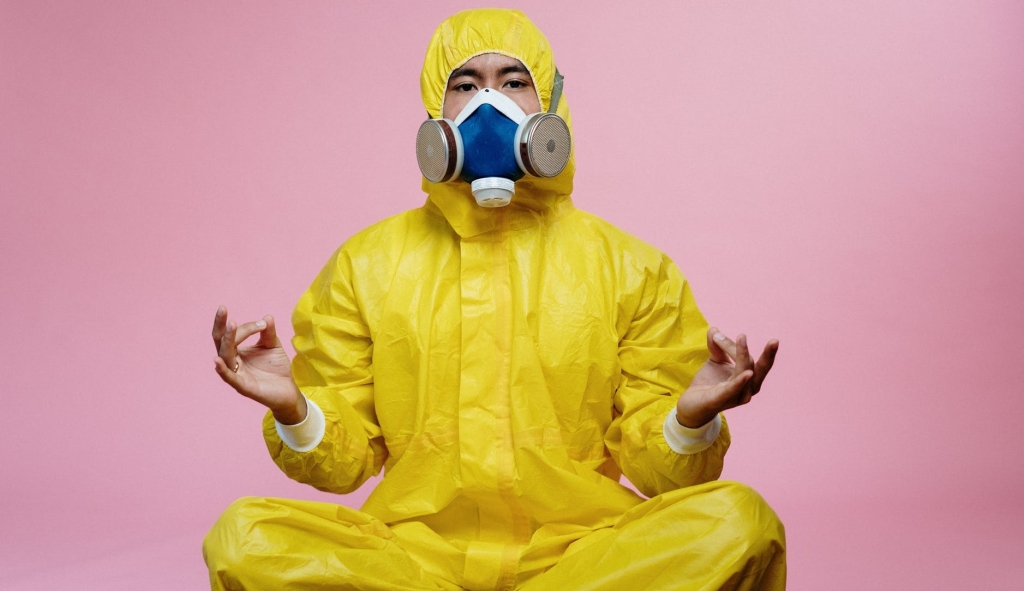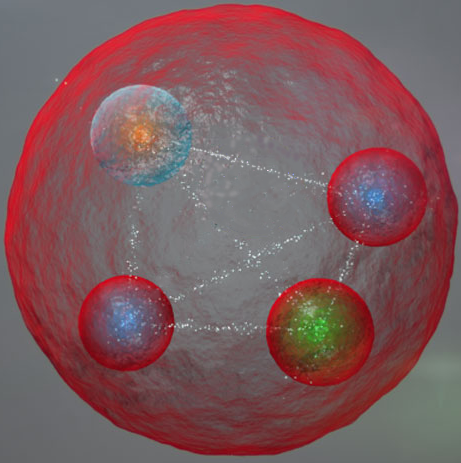I loved this book*. This is my fourth Michael Lewis book and I have liked every one. One of the reasons I enjoyed this book as much as I did is my past obsession with COVID-19. In 2020, I read less than half as many books as the year before because I read so many articles and papers on COVID. I also have a dislike of bureaucracy and therefore any book that exposed incompetence of a large government agency is confirming my bias. Let’s face nothing is better than a good bias confirmation!
One of the reasons I enjoy Lewis’s writing is his use of characters and their backgrounds. The first character I met was Dr Charity Dean. Lewis tells of how she handled being the health officer of Santa Barbara county. It was amazing how she took the bull by the horns and did unpopular things some of which paid out and some of which didn’t. She comes back in the story later as part of Gavin Newsom’s health department.
In the next character I met was Bob Glass. Bob, now retired from Sandia, led a team studying the impacts of social distancing. When his daughter Laura was 13 she was watching him play with his model. On the screen were all these green dots and one red dot, and they moved, he explained, according to rules that he wrote for them. Laura looked at the model and she said, “That could be the science fair project because that reminds me of the way disease spreads.” She had been learning about bubonic plague. So she set about modeling disease. In 2006, Bob & Laura with Walter Beyeler, a computer scientist at Sandia, published Targeted Social Distancing Designs for Pandemic Influenza. “Bob glass had now read enough about epidemiology to know that his daughter’s project was an original contribution to the field. I asked myself, why didn’t epidemiologists just figure it out? They didn’t figure it out because they didn’t have tools that were focused on the problem.” (p79)**
Next I met Rajeev Venkatya who worked in the GW Bush White House. After Bush read The Great Influenza he asked “What’s our strategy?” (p52) Rajeev says we didn’t have a strategy so he was tasked with the writing one. He did it over a weekend at his parents house. Using this thin plan Bush asked Congress for $7.1 billion in spending to prepare for an influenza pandemic. The book was referred to as “the seven-billion dollar book” (p53) in the white house after that.***
When I met Richard Hatchett, he is a doctor that was working as an oncologist. He received a phone call: “This is Noreen Hynes, from the vice president’s office.” He was annoyed and answered “How can I help you?” while thinking “Vice president of what?” “General Lawlor has read your medical proposal…” He then realized who this was and said “Oh, vice president Cheney” she replied “Is there another vice president?” (p56)
Finally I meet my favorite character, Carter Mecher. He is working in the VA. This exchange between him and an old vet tells a lot about him. “‘What can we do to make you more comfortable?’ he asked. The old vet studied him a beat and then wrote on the board, ‘Beer’. ‘What kind of beer?’ asked Carter.” (p62) He was a true systems thinker. “One way to reduce medical error, he thought, was to redesign the environment to make it more difficult for bad things to happen. “You cannot put 120 volt plug into a 240 volt outlet” he said, by way of analogy. “Why? You can’t do it! You can’t fit it!” In medicine there were too many 120 volt plugs that fit in a 240 volt outlets.” (p69)
Bob’s model makes it to the White House because of this strange set of events: “As it turned out, the guy at the Department of Veterans Affairs who had once dated Bob Glass’s sister actually knew Carter Mecher, and had emailed him everything Bob had sent.” 89+ “a few days after Richard first called him, Bob Glass installed a bed on stilts beside his computer in a shed in the backyard. Each night in Albuquerque, he ran computer simulations of various pandemics, and various responses to them, so these guys he never met could have the answers when they arrived at work in the morning.” (p81)
“Carter invented a name what they were doing. “Redneck epidemiology,” he called it. It took just a few months for them to piece together what it actually happened in 1918. Their paper appeared in the May 2007 issue of the proceedings of the National Academy of Sciences.” 103 Public Health Interventions in Epidemic Intensity During the 1918 Influenza Pandemic
One of the more impressive characters is Joe DeRisi, a winner of a MacArthur’s grant, co-president of the Chan Zuckerberg Biolab and helped to develop the ViroChip. “The Virochip, as it was called, was actually a glass Microsoft slide. It surface hell genetic sequences from every known virus. The sequences, along with the genetic information of living creatures, were stored in a federally funded database called GenBank, inside the National institutes of Health.” (p141) Known viruses would stick on the chip and unknown viruses would stick to one or more related virus so you could find out how new viruses were related to known viruses. Truly remarkable stuff that had him sent to talk to some secret agency in Tysons Corner (an extension DC sprawl in northern VA for those not familiar.) On a flight home from Cambodia on January 10, 2020 he changed planes in Guangdong, China. “They were now lots of security people wearing masks. Passengers were required to step, one by one, inside an acrylic stall and be scammed for fever… ” I thought, these people know something we don’t.” (p159)
“Carter and Richard had never really stopped working together. Around them a small group had formed. Seven men, all doctors.” (p163) Carter, Richard, Rajeev Venkayya (big Asian drug company), Duane Caneva & James Lawler (US Navy) and Matt Hepburn & Dave Marcozzi (US Army) “They even been given a name: Wolverines.” (p164)****
This is told from Richard’s POV: “Fire was his favorite metaphor to convey how hard it was for people to wake up to a threat that grew exponentially. One fire in particular had captivated his and Richard’s imagination when they read of it years earlier.” The Mann Gulch fire killed 15 young fire fighters because it moves through tall grass so fast and they were walking downhill towards the river which they planned on using as their safety escape only to find the fire across the river it must coming their way. “10 minutes later, at 5:55, the fire was traveling at 7 miles per hour. One minute later, at 5:56, the hands of the wristwatch of one of the young men melted in place: that’s how the investigators determined exactly when 10 of the 15 had burned to death, some still carrying their heavy backpacks and Pulaski axes.” (p171)
One sickening story comes from one of the first group of Americans quarantined in National guard base just outside of Omaha, near the global center for health security run by James Lawler (a wolverine.) “The CDC sent one of its epidemiologists to visit James Lawler. The end of the meeting, the guy said he needed to check with Atlanta. The next day I get to panic call from him, quote said Lawler. ” It’s gone all the way up to redfield. He said, ” you can’t do it!” I said why? He said I would be doing quote research on imprisons persons ” never mind that every single one of the 57 Americans and quarantined wanted to be tested: the CDC forbade it.” (p176)
Carter using all the data he could find, and at that time it wasn’t much, to estimate the case fatality rate between .5% and 1.5% and it would infect between 20 and 40% of the US population if the government did nothing. He wrote a note to himself January 27th 2020 that “the virus would kill between 900,000 and 1.8 Americans.” (p177) As of April 16th 2022 that number stands at 1,015,357. I’d call that prophetic!
In February 2020, Dwayne Caneve asked Charity Dean to look at a bunch of old emails he labeled “Red Dawn.” Soon after that Charity became a member of the Wolverines. At this point Charity is assistant director of health for the state of California. After the head of the health department, who hired her, left the governor picked Sonia Angell (As a character in one of my favorite movies would say “you have chosen poorly”)
Joe, of the Chan Zuckerberg Biolab, decided in March 2020 to turn his lab into a COVID-19 testing facility. It was free of charge and yet they found very few people would use it. The reason sickens me. In an exchange with the Zuckerberg San Francisco General Hospital they said “we don’t know how to do no cost”What do you mean ask the lab ” it shows up as an error in the hospital computer if we put zero cost” (p248)
Near the end of the book Lewis writes about a book called The Swine Flu Affair, about the 1976 attempt by the CDC to vaccinate people against an up-and-coming swine flu. They only managed to vaccinate roughly 20% of the people and the swine flu wasn’t that bad. There was lots of bad press about people dying from the vaccine. The book put all the blame on the head of the CDC at the time, David Sencer. The book came out after he’d already been fired by President Reagan and then he become an alcoholic because of the depression. Richard and Carter invited him to the White House and President Obama took an interest in the meeting. Just before he died he at least was validated. I like good stories that have a somewhat happy ending.
*This book was published May 4th 2021 which means most of what was written was in 2020.
**The number following p (or numbers following pp) in parentheses is the page number from the book. Didn’t know how to do it so Google led me to The University of Western Australia!
***Congress approved $3.8 billion with $3.3 billion for the Public Health and Social Services Emergency Fund to boost pandemic preparations. The money includes (Source):
- $350 million for upgrading state and local response capacity
- $267 million for “international activities, surveillance, vaccine registries, research, and clinical trials”
- $50 million to increase laboratory capacity through the Centers for Disease Control and Prevention
****If I have to tell you that reference then we can’t possibly know each other!








